- Stop running services: Navigate to Settings > Developer options > Running Services, select the service, and tap Stop.
- Limit background processes: Go to Settings > Developer options > Background process limit and set your preferred limit.
- Put unused apps to sleep: Navigate to Settings > Battery > Background usage limit and enable Put unused apps to sleep.
For an optimized performance, you must check what apps run in the background on your Android device. In this guide, we’ll explore all possible ways to find and stop the apps running in the background on your Android phone or tablet. If you keep track of such apps, you can enjoy a faster performance and extend the battery life of your Android device.
It’s easy to find background apps from the App Switcher or Recents screen and get a detailed view from the Developer Options. Moreover, you can use ADB to get a list of the background apps and processes.
Don’t Miss: How to Check Battery Health, Charge Capacity and Cycle Count via ADB
1. Stop Apps from Running in the Foreground
I have seen people using the Home button instead of the Back button on the navigation bar to close apps. While this method quickly takes the user to the Home screen, it also leaves apps open and running. It’s a good habit to close or exit apps properly to stop them from running in the background. Alternatively, you can keep the Recents screen clean to ensure that the foreground apps you didn’t close properly are stopped.
- Tap on the App Switcher icon on the navigation bar of your Android device.
- You’ll see the Recents screen showing the apps you used recently.
- Tap the Close All or Clear All button to close apps that are open in the background.

- Now tap the App Switcher icon again and tap the Active in background option located in the top-left corner of the screen.
- Tap the Stop button next to the app running in the background.

2. Stop Running Apps via Developer Options
The Developer Options on Android is the abode of sensitive and experimental settings. Since these options remain hidden by default, you must enable them manually. You can fine-tune some of its settings to optimize the performance of your device. It also allows users to limit background processes and stop running apps and cached processes. Let’s see how to use the Developer Options to find background apps and close them.
- Navigate to and open Settings > About phone on your Android device.
- Tap the Software information on the About phone screen.

- Look for the Build number and tap it 7 times in a row. Enter your device PIN when prompted, and the Developer Mode will be enabled.

- Return to the Settings menu, scroll down, and tap Developer Options.
- Now tap Running Services to view all background apps and services.

- On the next screen, tap the app or service you want to stop and tap the Stop button to close it.
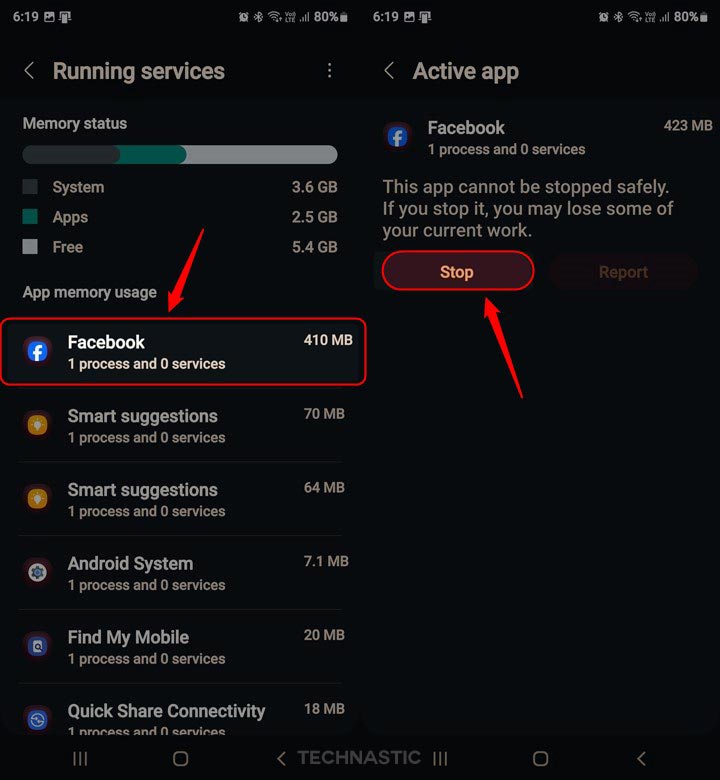
- To close cached apps and processes, tap the 3-dot icon on the top-right corner of the Running services screen and select Show cached processes.
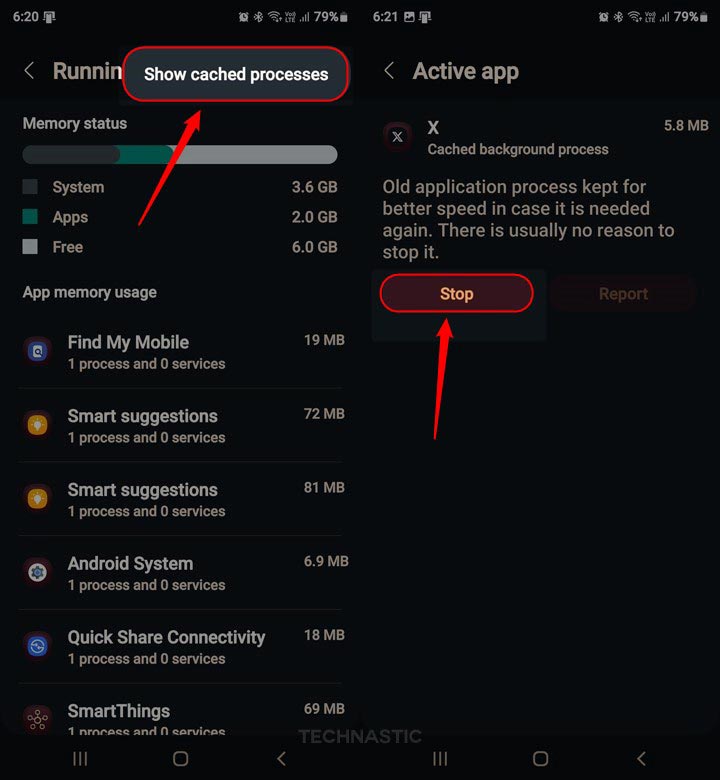
- Now tap the background process and select the Stop option.
To ensure optimal performance on your Android device, it would help if you regularly stopped apps running in the background.
3. Turn off Activities after Leaving Them
When you leave apps without closing them properly, they keep running in the background. You can manually close them or enable settings to automate the process.
- Open device Settings and tap Developer Options.
- Scroll down and look for Don’t keep activities under app-related settings.
- Tap the toggle next to the option to enable it.
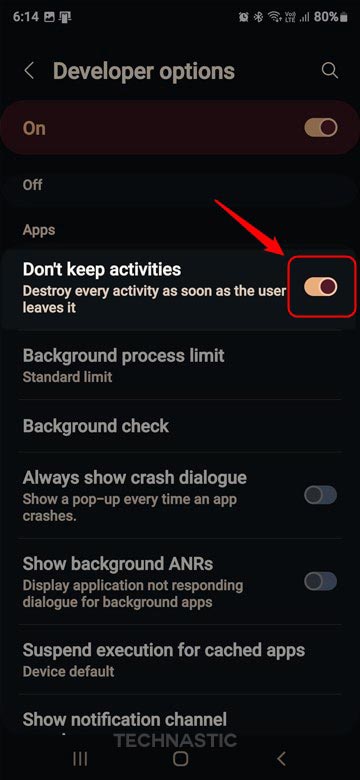
- From now on, whenever you leave an app or activity, your Android device will kill it so it doesn’t run in the background.
4. Limit Background Processes
Another way to minimize the background apps and processes is to set a limit. You can allow only a specific number of processes to work in the background. This way, you can determine the maximum or minimum number of processes that should run on your Android phone or tablet. Let’s see how to do this.
- Navigate to Settings > Developer Options.
- Scroll to the app-related settings and tap the Background process limit option.
- Select your preferred limit. You can also turn off all background apps by selecting the No background processes option.
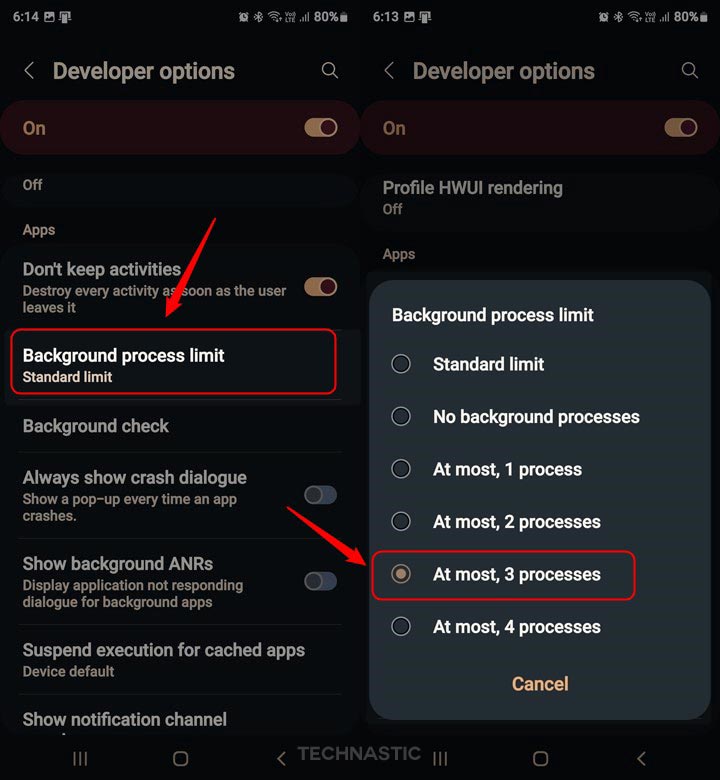
5. Put Unused Apps to Sleep
Poorly coded apps run in the background even when not in use. If you have loads of apps on your device, you may consider uninstalling them. Alternatively, you can put necessary but less-used apps to sleep to reduce CPU and battery usage. I’m not sure about others, but Samsung phones have a feature that allows you to do just that.
- Navigate to Settings > Battery and open it.
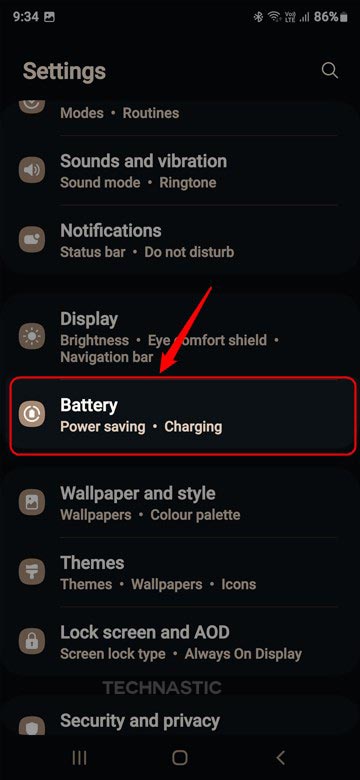
- Tap the Background usage limit option.

- Turn on the toggle next to Put unused apps to sleep. From now on, your phone will keep track of unused apps and put them to sleep automatically.
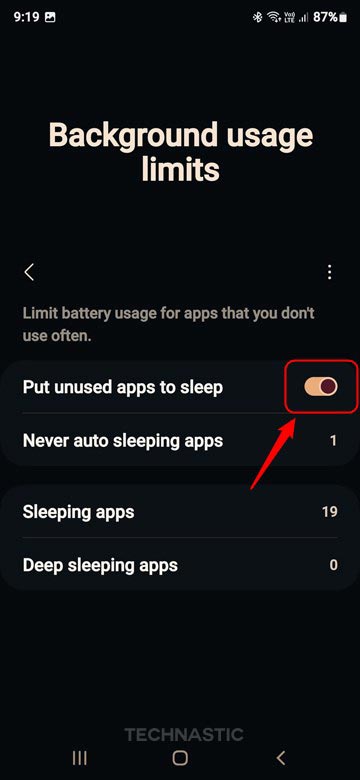
- Alternatively, you can add apps to the sleeping list manually.
- Select Sleeping apps or Deep sleeping apps, tap the ‘+‘ icon in the top-right corner of the screen, select the apps, and tap Done.
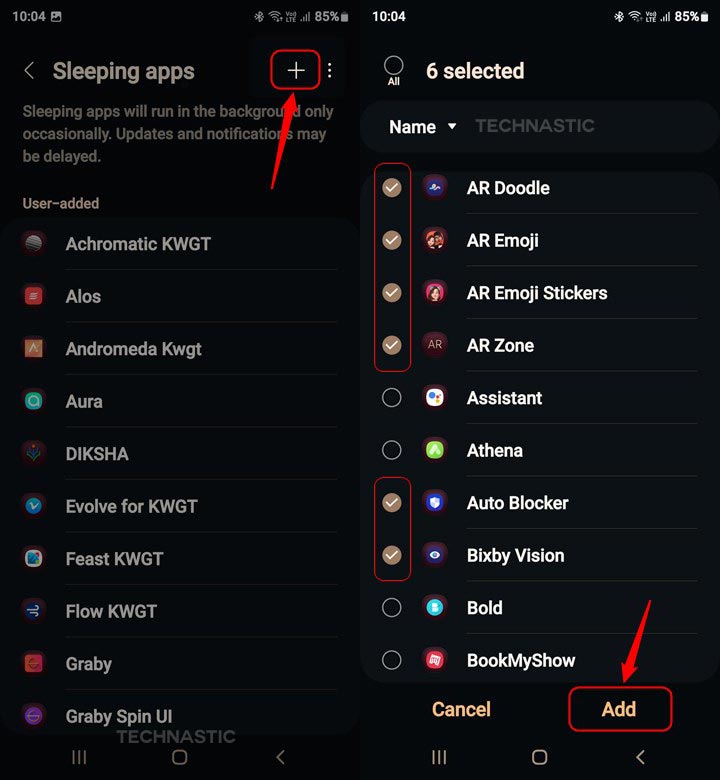
- To remove an app from the sleeping list, navigate to Sleeping Apps, tap the 3-dot icon in the top-right corner, and select Remove.
If you want to keep specific apps running in the background, select the Never Auto Sleeping Apps option and add your app to the list.
6. Manage Background Apps Using a 3rd-party App
The Google Play Store has apps for everything. When it comes to finding and managing background apps and processes on Android, there is a great app for that too.
- Install Background Apps & Process List from the Play Store.
- Launch the apps, select Open app on boot, and tap on Got It.
- Tap the app menu toggle to view available options and select Close Multiple.
- Tap the apps and processes you want to close and tap Close Chosen Apps.
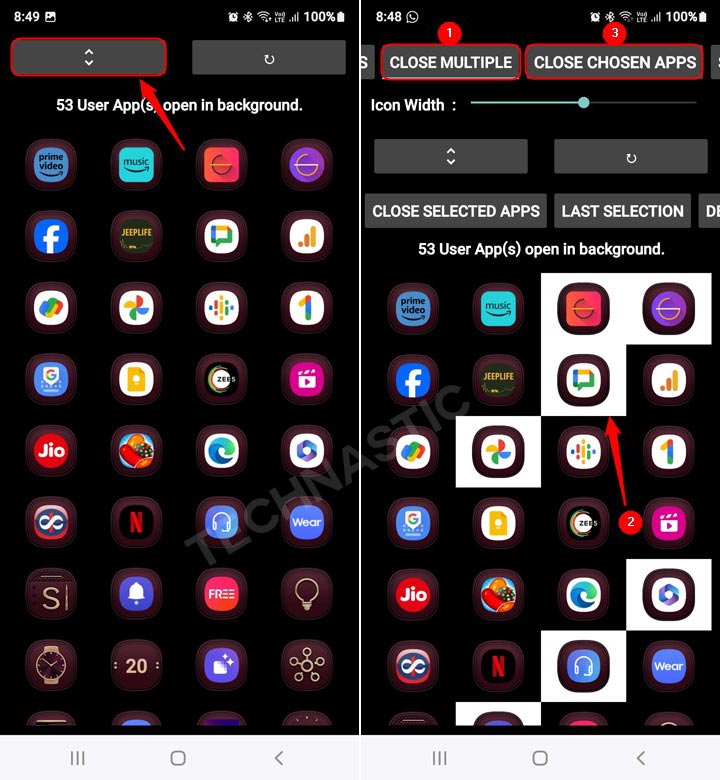
That’s all for now! I hope the tutorial helped you turn off background apps and close unwanted processes.
